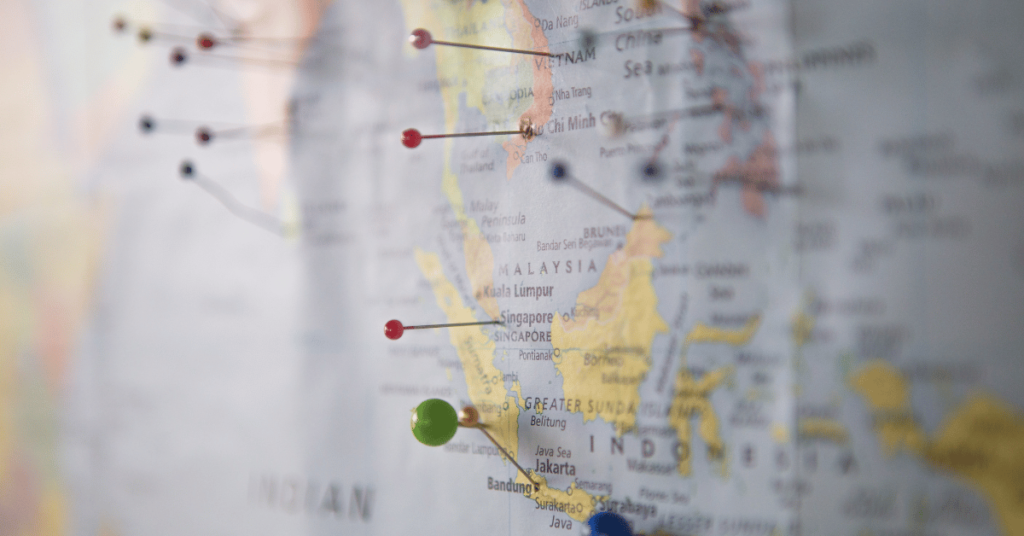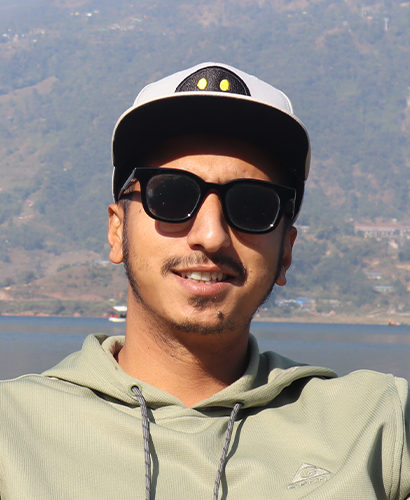In today’s digital era, having a strong online presence is crucial for businesses, and travel agencies in Nepal are no exception. With tourism being a major part of Nepal’s economy, competition in the travel sector has intensified. Tourists from around the globe are looking online for trekking packages, cultural tours, and adventure experiences in Nepal. If your agency is not visible on the first page of search engines, you are missing out on a significant number of potential customers.
This comprehensive guide will walk you through the best SEO practices specifically tailored to travel agencies in Nepal. By implementing these strategies, you can increase your online visibility, attract more organic traffic, and ultimately drive more bookings and inquiries.
1. Understanding the Nepalese Travel Market
Before diving into SEO tactics, it’s important to understand the travel industry landscape in Nepal. Tourism in Nepal revolves around key attractions like the Himalayas, including the famous Everest Base Camp trek, as well as cultural experiences in cities like Kathmandu and Pokhara. Adventure holidays such as rafting, paragliding, and wildlife safaris also draw international and domestic tourists alike.
In 2022, over one million tourists visited Nepal, many of whom began their research online months in advance. These travelers are not just looking for travel packages but are also seeking detailed guides, travel tips, and local recommendations. Recognizing these needs will help you tailor your SEO strategy to provide relevant, helpful content.
2. Keyword Research Specific to Nepal
Keyword research forms the foundation of any SEO strategy. For travel agencies in Nepal, it’s crucial to identify both primary and long-tail keywords that align with tourists’ search queries. Here’s how you can approach this:
Identify High-Value Keywords
Start by targeting primary keywords such as:
- Nepal travel agency
- Trekking in Nepal
- Nepal tour packages
- Everest Base Camp trek
- Best time to visit Nepal
These keywords have high search volume and are often used by potential customers at the top of the sales funnel. Complement these with more specific long-tail keywords like “family-friendly cultural tours in Nepal” or “customized trekking tours in the Annapurna region.”
Local Keyword Variations
Consider using local terms and phrases tourists may search for, such as “Nepal travel guide,” “Nepal adventure holidays,” or “Kathmandu sightseeing tours.” Additionally, incorporating synonyms and related terms (like “expeditions in Nepal” or “Nepalese cultural festivals”) can help you rank for a broader range of queries.
Utilize tools like Google Keyword Planner, Ahrefs, and SEMrush to find keyword opportunities, and make sure to analyze your competitors’ content to identify gaps you can fill.
3. On-Page SEO Strategies
Optimizing your website’s content and structure is essential for improving your rankings. Here are key on-page SEO practices to follow:
Optimize Meta Titles and Descriptions
The meta title is often the first thing users see in search results. Ensure it includes your primary keyword and is both enticing and informative. For example:
“Explore Nepal’s Best Trekking and Tour Packages – Book with a Leading Travel Agency!”
Similarly, craft meta descriptions that provide a brief overview of your services while encouraging users to click. Include a call-to-action (CTA), such as “Plan your adventure today.”
Create SEO-Friendly Content
Content is king in SEO. Write detailed, engaging content that addresses common questions and pain points tourists may have. For example, you could create guides on:
- What to pack for a trek in Nepal
- How to obtain a trekking permit
- Best seasons for various travel experiences in Nepal
Incorporate your target keywords naturally throughout the text. Avoid keyword stuffing, as this can lead to penalties from search engines.
Internal Linking
Link to relevant pages within your website, such as your tour package pages, blog posts, or contact page. This helps search engines understand the structure of your site and improves user experience by making navigation easier.
4. Local SEO Optimization
Local SEO is critical for travel agencies that rely on customers visiting a specific destination. Here’s how you can optimize for local search:
Claim and Optimize Your Google Business Profile
Make sure your agency’s Google Business Profile is up to date with accurate information, including your address, phone number, business hours, and services. Add photos of your tours, office, and past customer experiences to make your profile more appealing.
Encourage Reviews
Positive reviews build trust and improve your visibility in local search results. Encourage satisfied customers to leave reviews on Google, TripAdvisor, and other travel platforms. Respond to reviews—both positive and negative—to show that you care about customer feedback.
Local Directories and Listings
List your business on popular travel directories, such as Lonely Planet, Nepal Tourism Board, and TripAdvisor. This not only improves your local SEO but also helps you reach a wider audience.
5. Technical SEO Considerations
Technical SEO ensures that your website is easy for search engines to crawl and index. Here are key areas to focus on:
Mobile-Friendly Design
Many travelers browse and book tours from their smartphones. If your website isn’t mobile-friendly, you risk losing potential customers. Use responsive design to ensure your site adapts to different screen sizes.
Improve Site Speed
A slow-loading website can frustrate users and lead to higher bounce rates. Use tools like Google PageSpeed Insights to identify areas for improvement, such as image optimization, caching, and reducing unnecessary scripts.
Structured Data
Implement structured data (schema markup) to help search engines understand your content better. For example, you can use the “TouristAttraction” schema to highlight key destinations, which may improve your chances of appearing in rich search results.
6. Content Marketing and Blogging
A well-maintained blog can drive consistent organic traffic to your site. Focus on creating valuable content that caters to the interests of your target audience.
Develop a Content Calendar
Plan your content around major travel events, such as trekking seasons and festivals like Dashain and Tihar. Publish timely articles that answer common questions tourists have during these periods.
Destination Guides and Travel Tips
Create detailed guides for popular destinations like Everest Base Camp, Pokhara, and Chitwan National Park. Share insider tips on lesser-known attractions, cultural etiquette, and safety precautions.
Visual Content
Enhance your blog posts with high-quality images and videos. Visual content not only makes your posts more engaging but also improves your chances of ranking in image and video search results.
7. Link Building Strategies
Building backlinks from reputable websites signals to search engines that your site is authoritative and trustworthy. Here are effective link-building strategies:
Partner with Local Businesses
Collaborate with hotels, restaurants, and adventure companies to cross-promote each other’s services. For example, you could offer joint travel packages and link to each other’s websites.
Guest Posting
Write guest posts for travel blogs and industry websites that focus on Nepal. Provide valuable insights, such as expert trekking advice, to showcase your expertise and earn backlinks.
Travel Communities
Participate in forums and travel communities like Reddit, Lonely Planet’s Thorn Tree, and Facebook travel groups. Share your knowledge and include links to relevant pages on your site where appropriate.
8. Monitoring and Analytics
SEO is an ongoing process. Regularly monitor your performance to identify what’s working and what needs improvement.
Use Analytics Tools
Set up Google Analytics and Search Console to track key metrics, such as organic traffic, bounce rate, and keyword rankings. Analyze this data to understand user behavior and optimize your content accordingly.
Adjust Strategies Based on Data
SEO is not a one-size-fits-all approach. If certain keywords are underperforming, experiment with new content formats or targeting different search intents. Stay updated on Google’s algorithm changes and adjust your strategy as needed.
10. Social Media Integration for SEO Benefits
Social media may not directly impact search engine rankings, but its role in driving traffic and engagement can indirectly benefit your SEO strategy. For travel agencies in Nepal, leveraging platforms like Instagram, Facebook, and YouTube can be a game-changer.
Share Visual Content to Promote Destinations
Nepal is one of the most visually appealing destinations in the world, with its towering mountains, serene lakes, and historical landmarks. Take advantage of this by sharing high-quality photos and videos of your tours, treks, and cultural experiences. Platforms like Instagram and YouTube are ideal for showcasing such content.
Drive Traffic to Your Website
Include links to your blog posts, tour packages, and guides in your social media posts. For example, if you post an image of a trekker at Everest Base Camp, provide a caption that links to a blog post about the trek. This not only increases traffic but also signals search engines that your content is relevant and engaging.
Encourage Social Shares
The more your content is shared, the greater its reach. Encourage readers and customers to share your content by creating shareable visuals, infographics, or even contests related to Nepalese tourism. Increased visibility on social platforms can lead to more organic backlinks and mentions, both of which are positive signals for SEO.
11. User Experience (UX) and SEO
Google increasingly values websites that offer an excellent user experience. For travel agencies, this means creating a website that is easy to navigate and provides valuable information to visitors without frustration.
Fast Loading Times
A slow website can result in high bounce rates, which negatively affect your rankings. Ensure your site loads quickly by optimizing images, using browser caching, and minimizing unnecessary scripts.
Simple Navigation
Your website should be designed with simplicity in mind. Make it easy for users to find what they’re looking for, whether it’s tour packages, contact information, or travel guides. A clean, intuitive menu structure will reduce bounce rates and improve dwell time.
Interactive Elements
Include interactive elements such as inquiry forms, booking widgets, and travel calculators to engage visitors. The longer users stay on your site and interact with your content, the better it is for your SEO.
Mobile Usability
Given that a significant number of tourists research and book trips on their smartphones, ensuring your site is optimized for mobile devices is critical. Responsive design is non-negotiable.
12. The Role of Voice Search in Travel SEO
Voice search is on the rise, and optimizing for it can give your travel agency a competitive edge. Many travelers use voice-activated assistants like Siri, Alexa, or Google Assistant to find information about destinations, tour packages, or local attractions.
Focus on Conversational Keywords
Unlike traditional search queries, voice searches tend to be more conversational and question-based. For example, instead of typing “best trekking packages in Nepal,” a voice search user might ask, “What’s the best trekking package in Nepal for beginners?” Optimize your content by targeting long-tail keywords and phrases that mimic natural language.
Create FAQ Sections
A great way to address voice search queries is by creating FAQ sections on your site. Common questions such as “When is the best time to visit Everest Base Camp?” or “What permits do I need for trekking in Nepal?” can help you capture voice search traffic.
Optimize for Local Search
Voice search often has a local intent, such as “travel agencies near me” or “cultural tours in Kathmandu.” Ensure your Google Business Profile is optimized and that your location information is consistent across all online platforms.
13. Video Marketing for SEO
Video content has become an integral part of digital marketing, and it can significantly boost your travel agency’s SEO efforts. Travelers often seek visual content to help them plan their trips, and videos can provide a more immersive experience than text alone.
Create Destination Videos
Showcase popular destinations like Pokhara, Chitwan National Park, or the Annapurna Circuit through well-produced videos. Include footage of local culture, trekking routes, and tourist activities. Make sure to optimize video titles, descriptions, and tags with relevant keywords to improve visibility on platforms like YouTube and Google.
Embed Videos on Your Website
Embedding videos on relevant pages of your website can enhance the user experience and increase dwell time, which are positive SEO signals. For example, embed a video tour of Kathmandu on your blog post about city sightseeing.
Use Video Transcriptions
Adding transcriptions of your video content to your website can help you rank for additional keywords and improve your on-page SEO. Transcriptions make your content accessible to a wider audience and provide search engines with more text to crawl.
14. Common SEO Mistakes to Avoid
While implementing SEO strategies, it’s important to avoid common mistakes that could hinder your progress.
Keyword Stuffing
Overusing keywords in an unnatural manner can lead to penalties from search engines. Instead, focus on providing valuable content and use keywords naturally within the context of your writing.
Ignoring Local SEO
Many travel agencies overlook the importance of local SEO, assuming that general keywords will be sufficient. However, local SEO is critical for attracting travelers who are specifically looking for services in Nepal. Ensure your business listings, reviews, and local keywords are optimized.
Neglecting Mobile Optimization
With more travelers using mobile devices for trip planning, a website that isn’t mobile-friendly will lose potential customers and rankings. Conduct regular mobile usability tests to ensure your site performs well on smartphones and tablets.
Lack of Content Updates
Old, outdated content can hurt your SEO. Regularly update your blog posts, tour descriptions, and destination guides to keep them relevant. This signals to search engines that your website is active and up-to-date.
15. Measuring SEO Success for Your Travel Agency
It’s not enough to implement SEO strategies; you need to measure their effectiveness and make adjustments as needed. Here’s what to track:
Organic Traffic
Monitor how much traffic you’re getting from search engines using tools like Google Analytics. Pay attention to which pages are driving the most traffic and which keywords are performing well.
Keyword Rankings
Use tools like SEMrush or Ahrefs to track the rankings of your target keywords. If certain keywords are not performing as expected, consider revisiting your on-page SEO or targeting different variations.
Conversion Rates
The ultimate goal of SEO is to drive bookings and inquiries. Track conversion rates to see how well your website is converting visitors into leads or customers.
Backlink Profile
A strong backlink profile is essential for SEO success. Use tools like Moz or Ahrefs to monitor the quality and quantity of backlinks to your site. Disavow any toxic links that could harm your rankings.
Final Thoughts
SEO for travel agencies in Nepal requires a strategic, multifaceted approach. From keyword research and local SEO to content marketing and technical optimizations, there are numerous opportunities to boost your visibility and attract more customers. By addressing the unique needs of travelers and avoiding common mistakes, you can position your agency as a trusted resource in the tourism industry.
As a trusted SEO consultant in Nepal, I specialize in helping travel agencies enhance their online presence. With years of experience in SEO and a deep understanding of the travel industry, I can create a custom SEO strategy tailored to your business. Contact me today to get started on your journey to higher rankings and more bookings.



